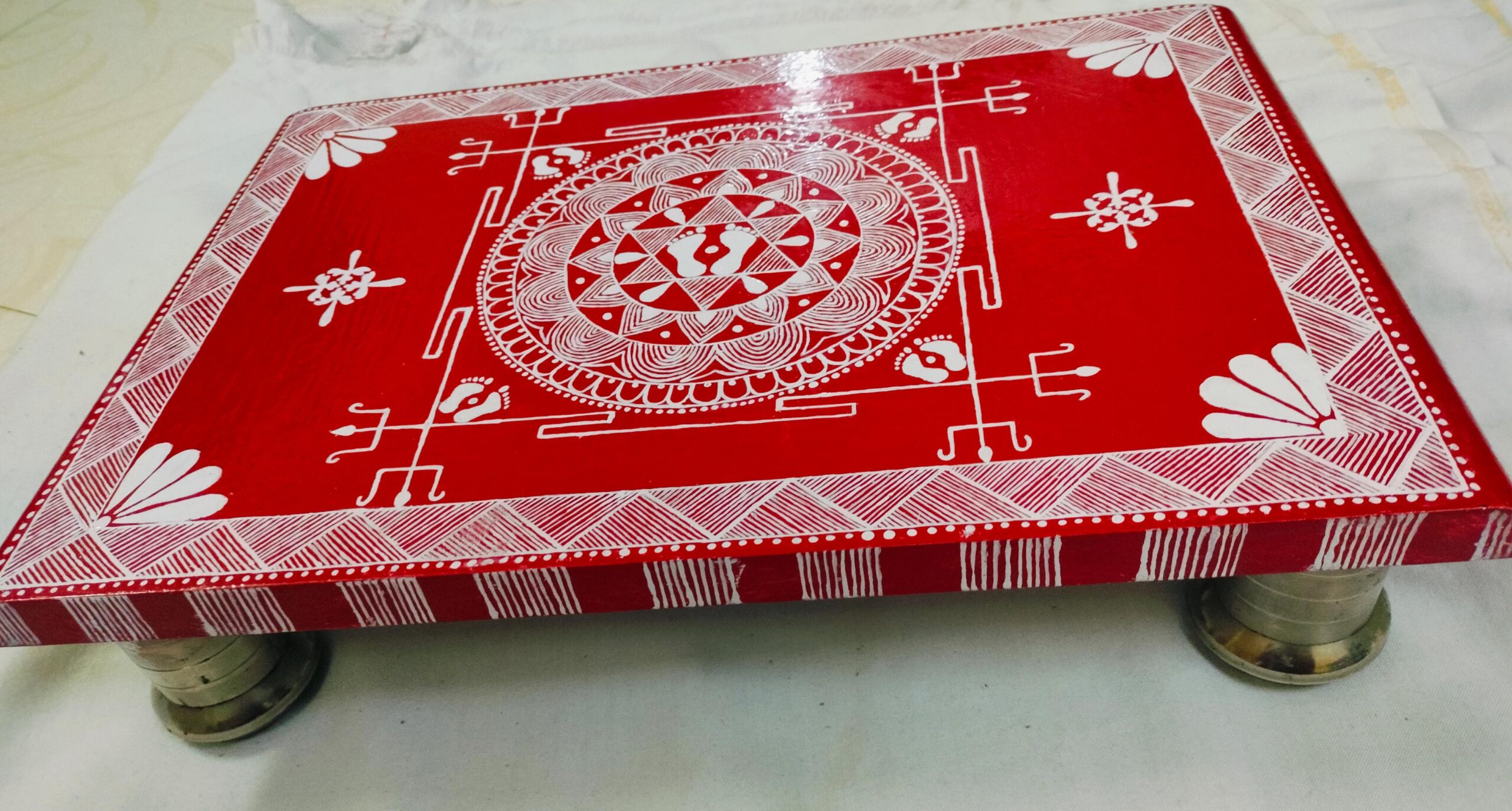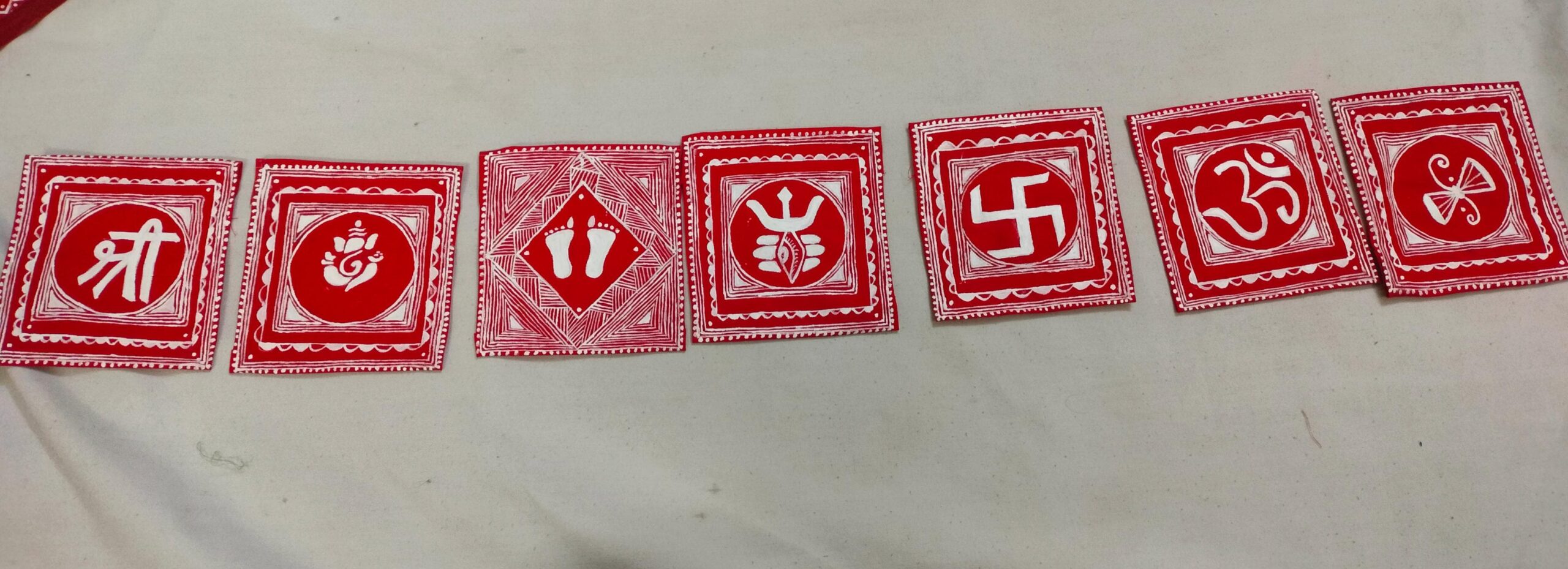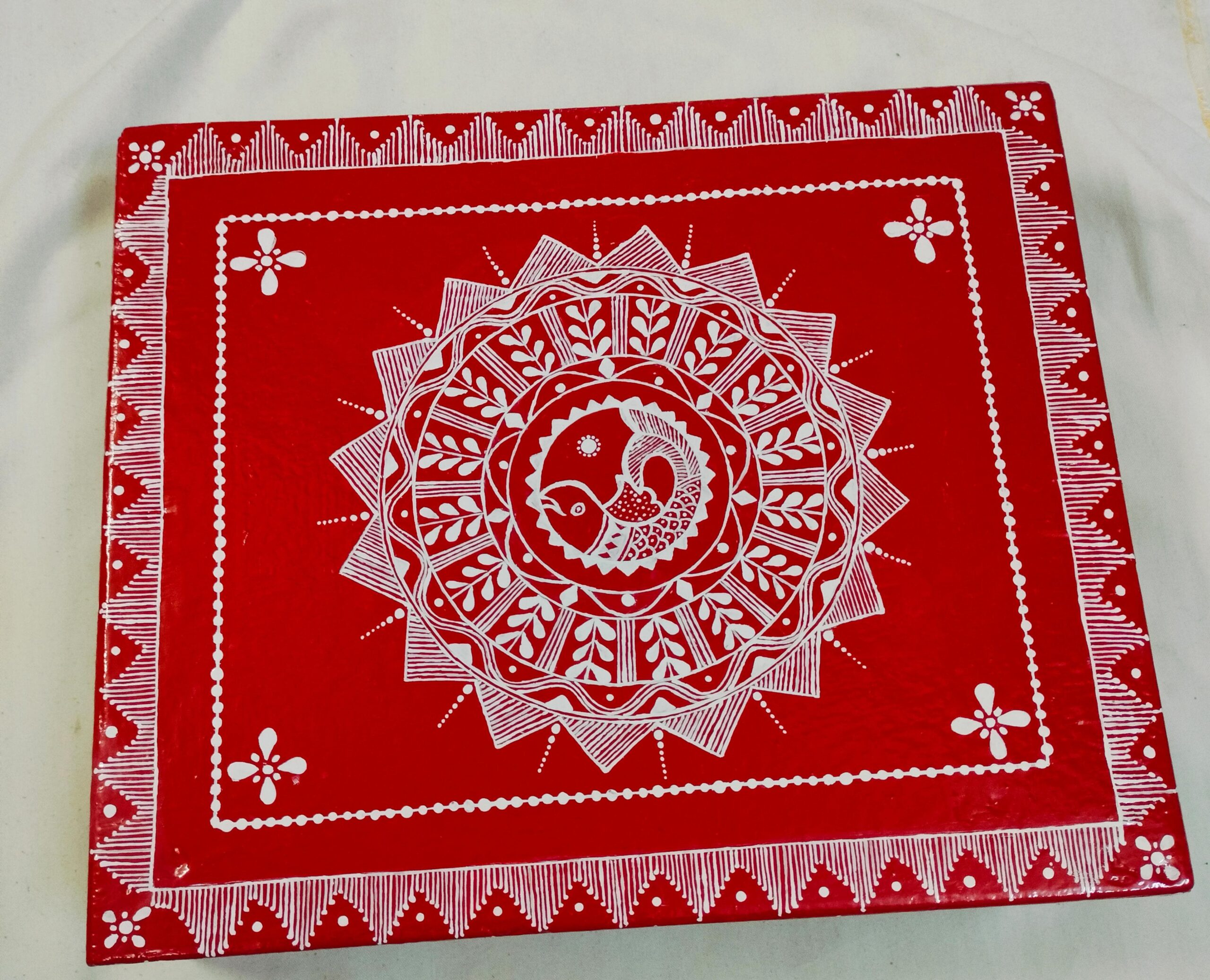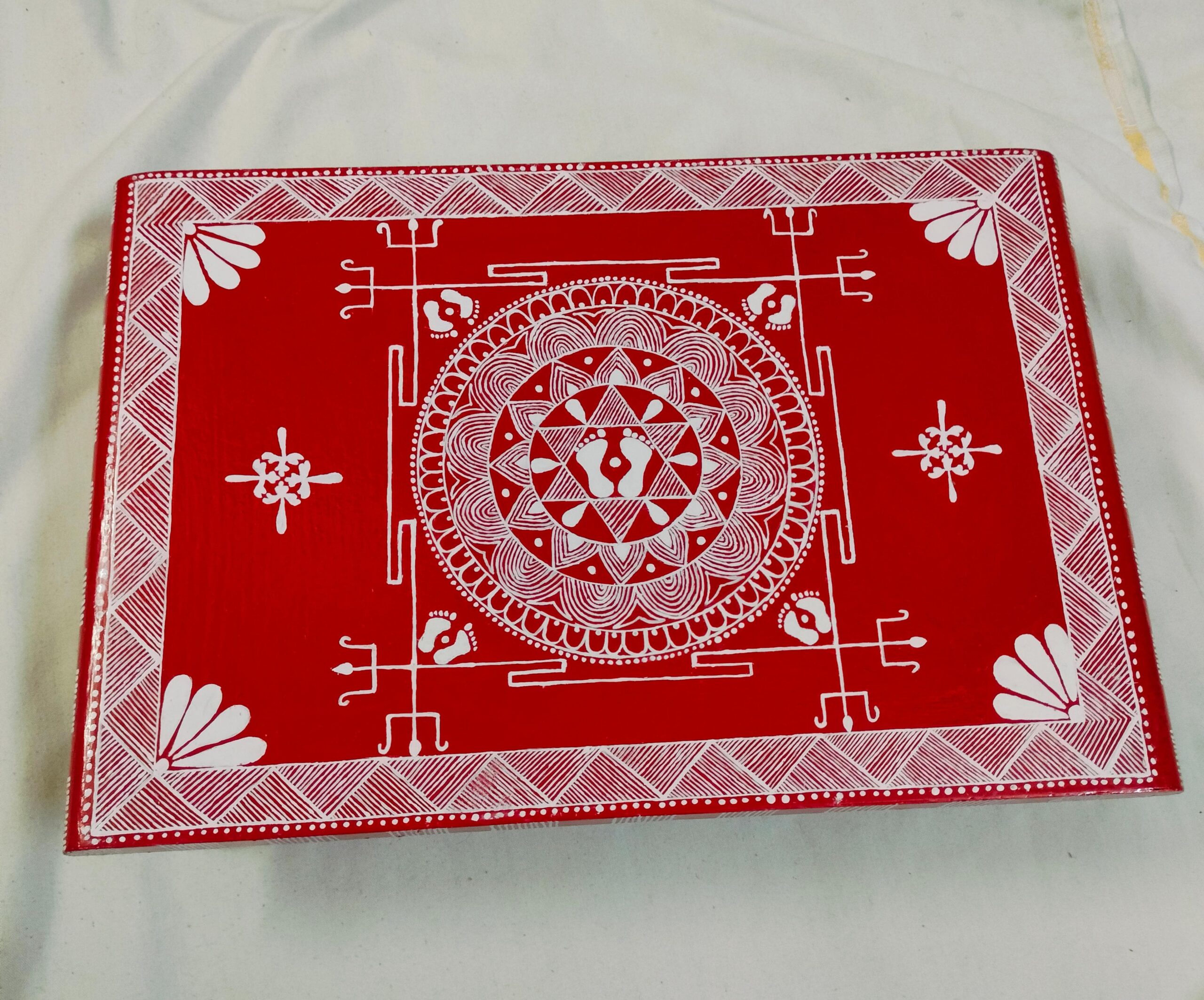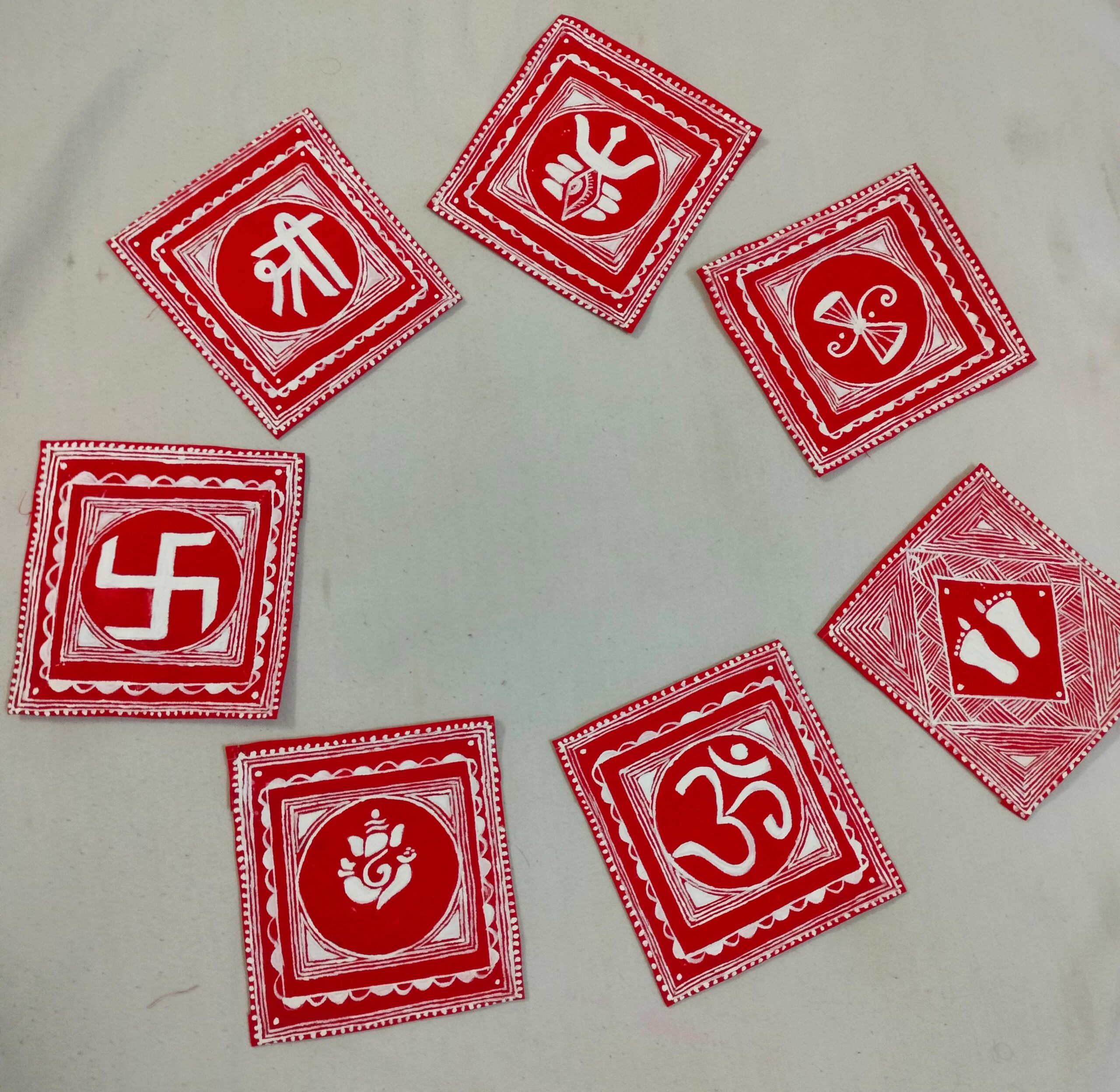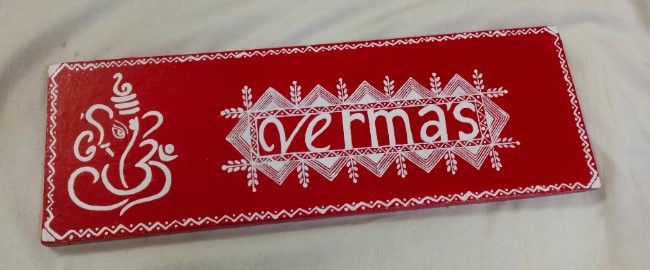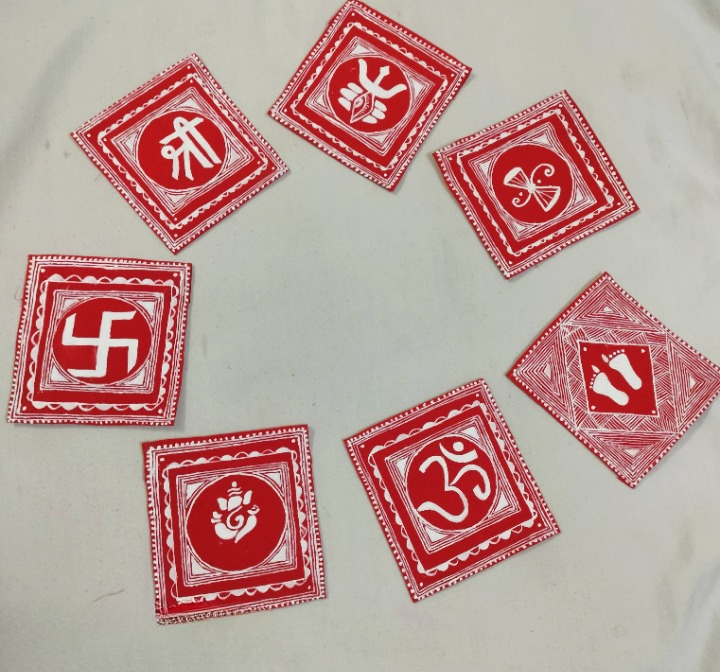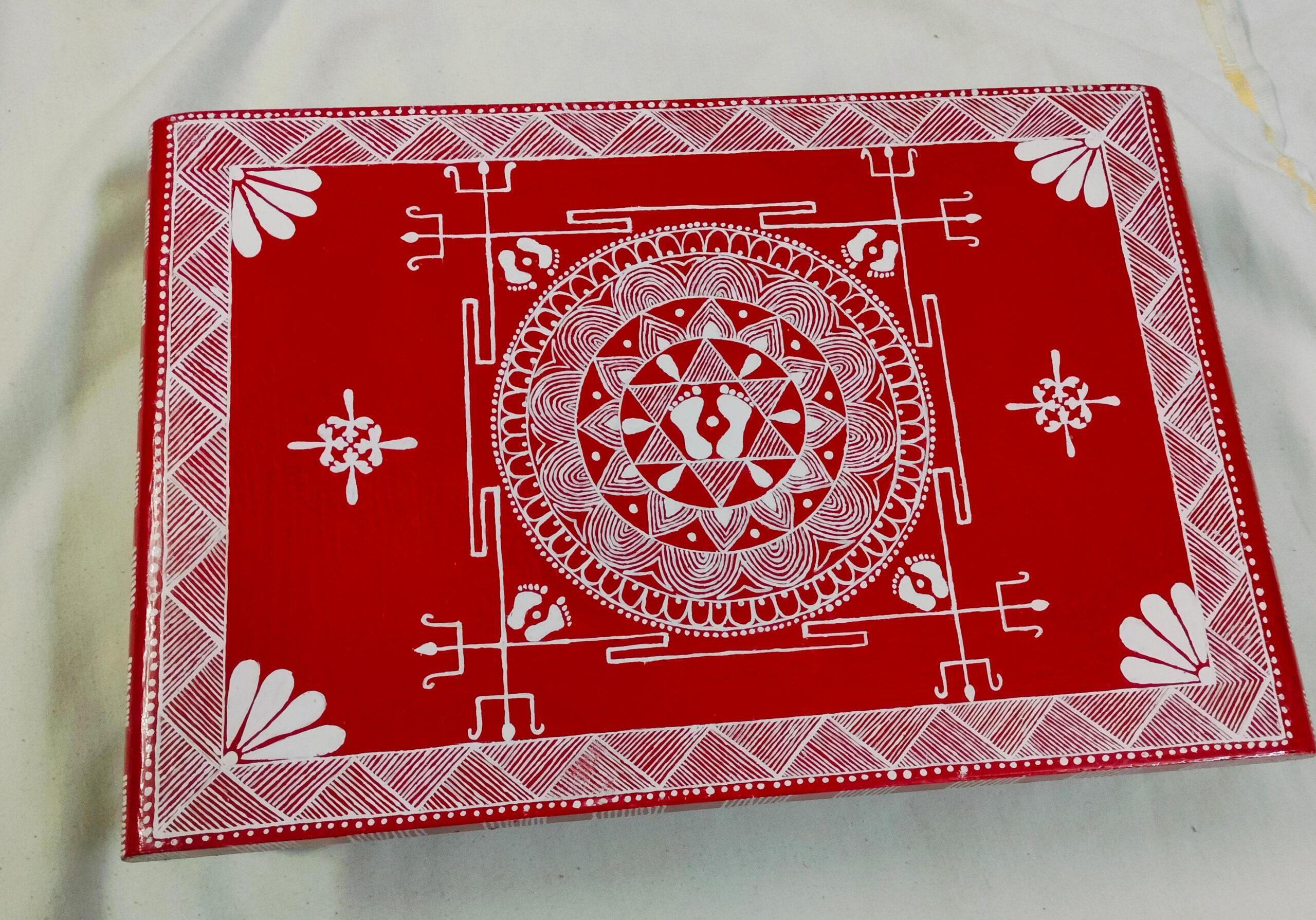Aipan
Aipan is a traditional folk art form originating from Uttarakhand, India. It is predominantly practiced by the women of the Kumaon region. Known for its intricate designs and cultural significance, Aipan art is typically created on floors and walls during festivals, religious occasions, and special ceremonies like weddings. Key Features of Aipan Art:
- Materials and Medium - Aipan designs are traditionally made using a paste of rice flour (known as 'bishwar') on a red ochre background ('geru').
- Motifs and Patterns - Common motifs include geometric patterns, floral designs, and representations of deities and symbols from Hindu mythology. Each motif has a specific significance and is used to invoke blessings and positive energy.
- Cultural Significance - Aipan art is more than just decoration; it is a spiritual practice meant to purify spaces and bring prosperity. The designs are believed to attract divine blessings and protect against evil.
- Occasions - This art is prominently displayed during festivals such as Diwali, Holi, and Navratri. It is also integral to ceremonies like housewarming, naming ceremonies, and weddings.
- Modern Adaptations - While traditionally created on floors and walls, Aipan designs are now also found on various items like canvases, textiles, and home decor products, reflecting the evolving nature of this art form. Aipan art is a beautiful expression of the rich cultural heritage of Uttarakhand, preserving ancient traditions through its intricate and meaningful designs.



